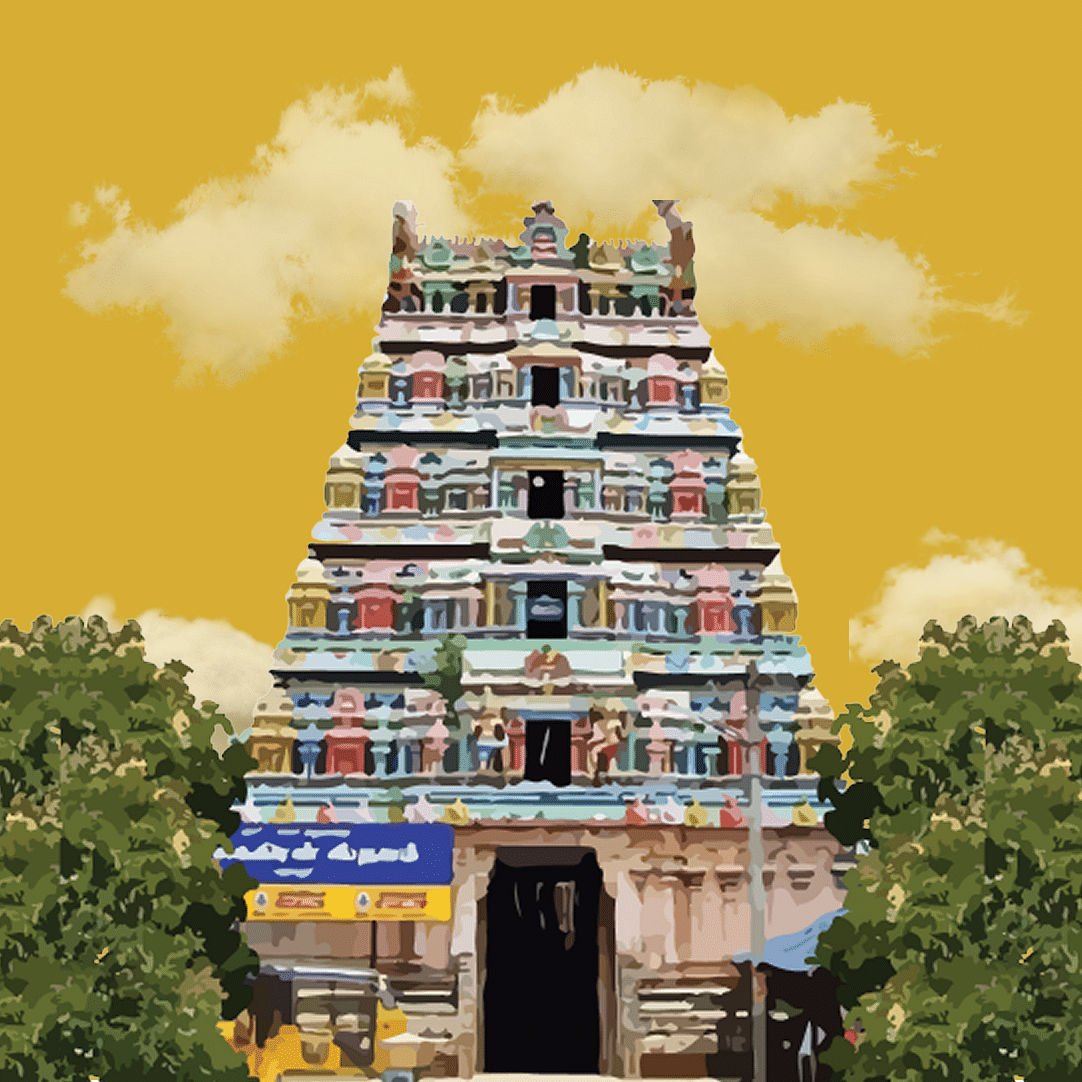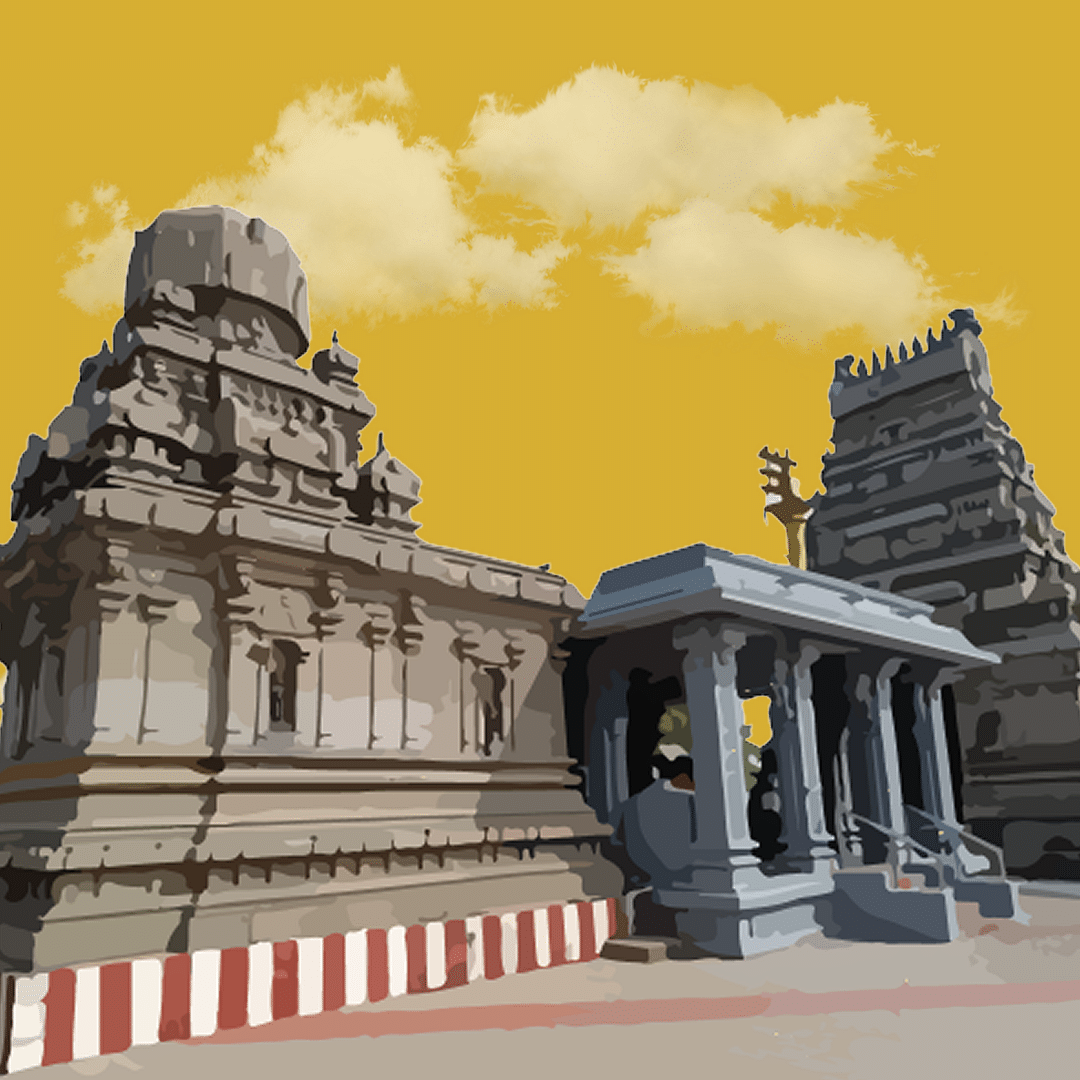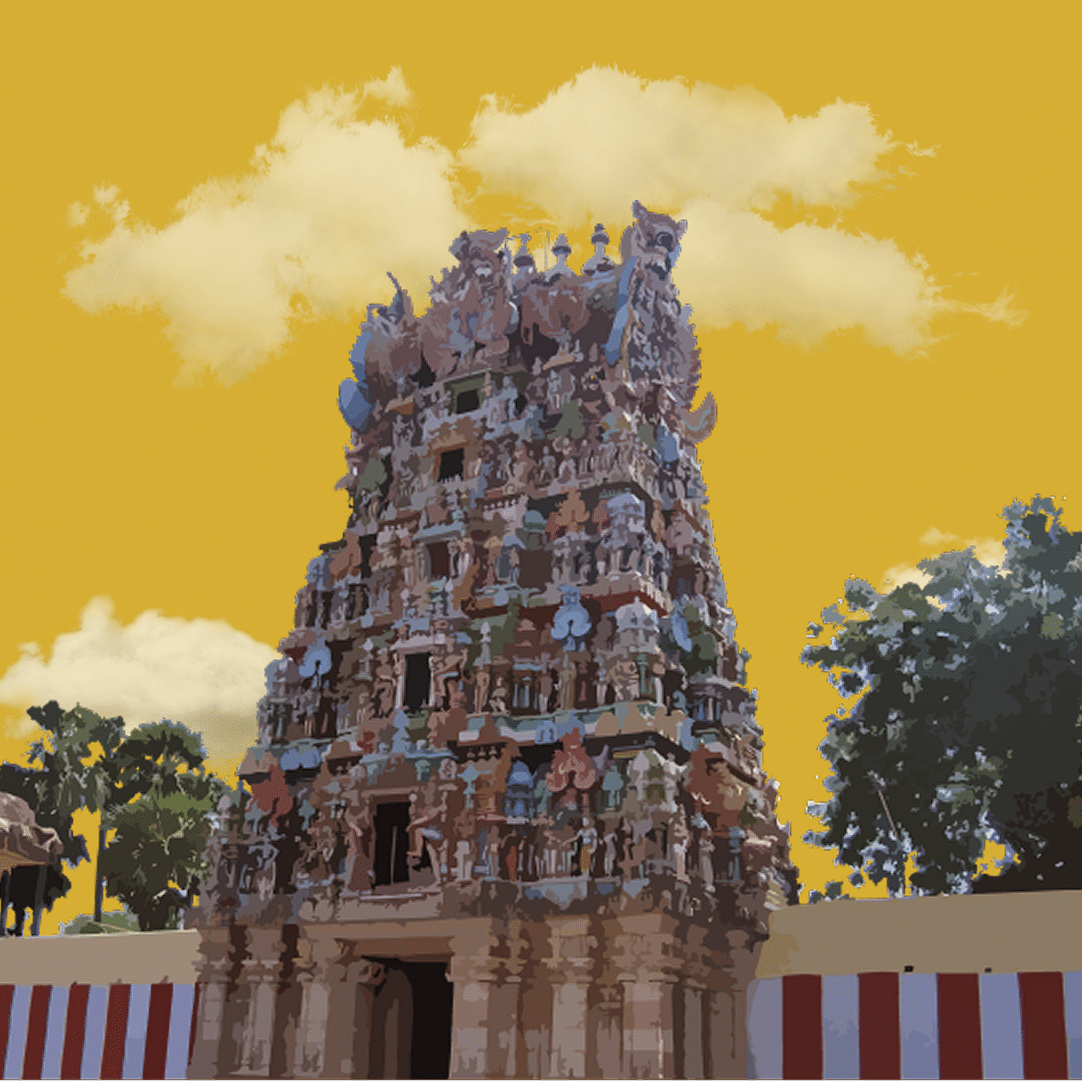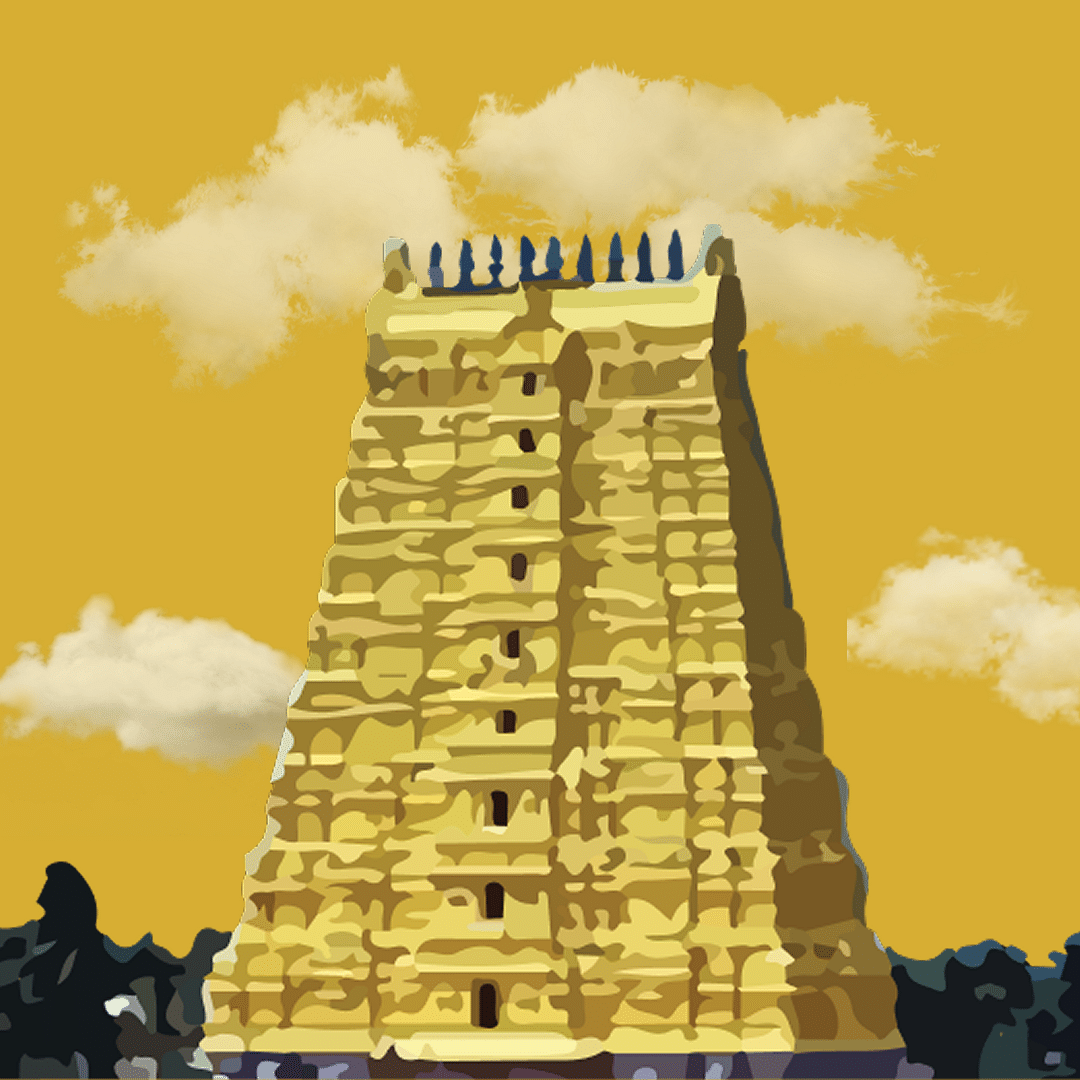Home > The GReaT Divine Darshan > Pondicherry
HOLY PLACES
IN PONDICHERRY
Fondly known as the French Riviera of the East, Puducherry is where colonial charm meets coastal chill. Think mustard-yellow buildings posing for postcards, bougainvillaea casually draped like it's always spring, and the scent of croissants doing a polite waltz with temple incense. Once known as Vedapuri, it was a seat of Vedic wisdom long before the French said 'bonjour'. From the golden sands of Rock Beach to the serenity of Auroville, Puducherry offers a peaceful escape with plenty of character. If you suddenly catch yourself staring off into the distance or feeling the urge to deliver a soulful monologue, don’t worry—you’ve just wandered onto the street where Vinnaithaandi Varuvaayaa turned heartbreak into an art form. Puducherry doesn’t just create the scene; it hands you the script and makes you the lead, ready for all the feels and dramatic pauses.
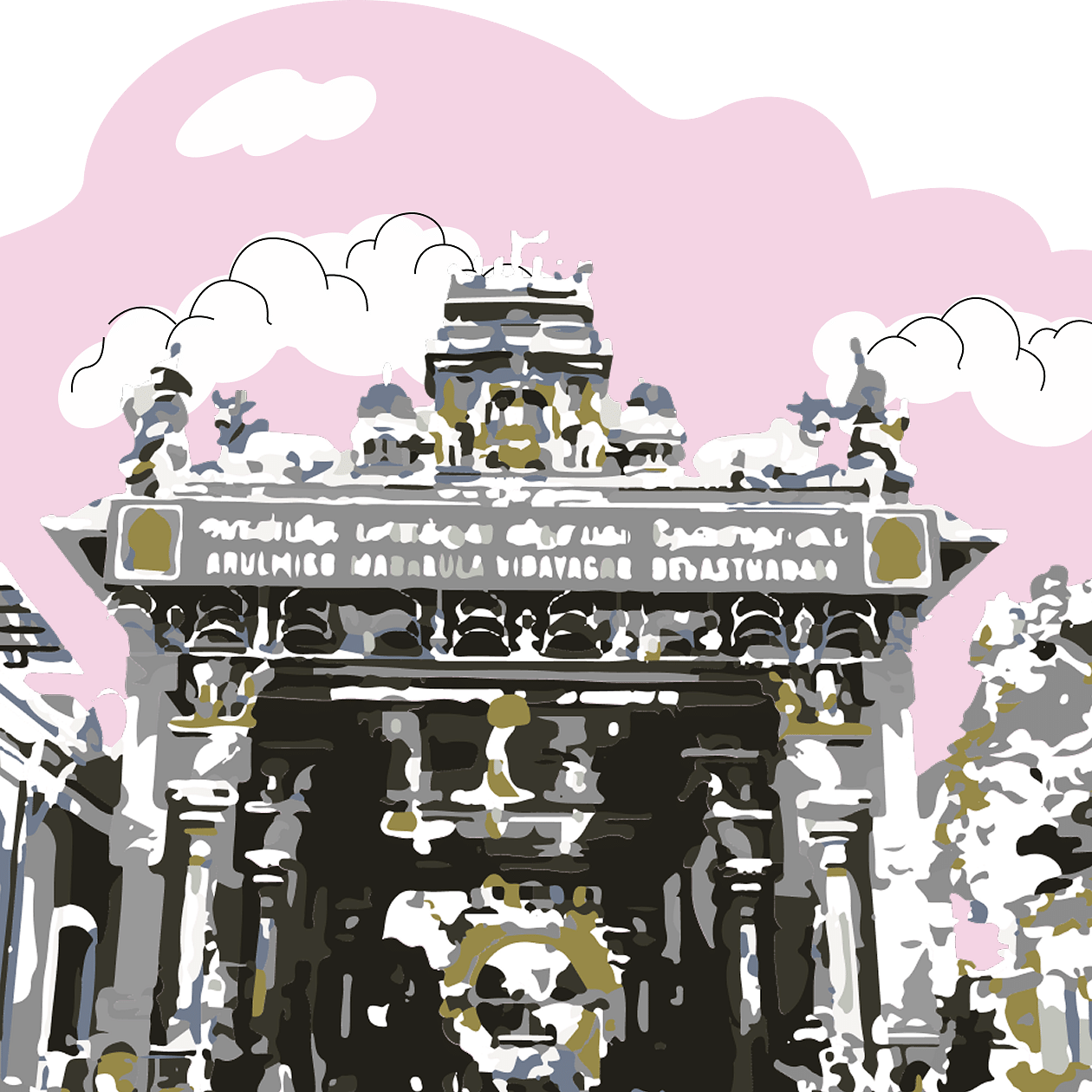
 OUR Hotels
OUR Hotels
IN THE CITY, BY THE SACRED SITES 🏙

Radisson Resort Pondicherry Bay
Nestled by the Bay of Bengal, Radisson Resort Pondicherry Bay is where Tamil soul grooves with French elegance—Athangudi tiles that could outshine your Diwali outfit, and villas so cosy, even your weekday stress might consider early retirement. With 46 chalets and 5 villas, comfort isn’t just promised—it practically fluffs your pillow and hands you a welcome drink. Craving crepes with a side of sambhar? Bay Bistro’s fusion magic serves up flavours that confuse your brain but thrill your taste buds. Planning a reunion where everyone shows up like Vijay and gang in Nanban? (The South Indian version of 3 Idiots!) Our banquet hall has seen everything from emotional speeches to impromptu sing-alongs that no one rehearsed. And when you’re ready to zone out, take your pick—float by the lagoon, wander barefoot along the beach, or just stare into the sea like you're in a slow-motion music video. Because in Pondy, even doing nothing feels like a moment worth framing.
 OURDivine Destinations
OURDivine Destinations
TRAVEL THROUGH THE MUSEUMS OF FAITH 🛕

ARULMIGU MANAKULA VINAYAGAR DEVASTHANAM ✨
One of Puducherry’s oldest temples, Manakula Vinayagar, is dedicated to Bhuvaneshwar Ganapathy, known for his eastward gaze and divine grace. Steeped in history and legend, it’s a sacred symbol of resilience and unwavering faith.
Distance from Our Hotel10 km
Timing5:45 a.m. to 12:30 p.m.
4:30 p.m. to 9:30 p.m.FestivalVinayagar Chadurti: (Sep)
Brahmothsavam: (Aug-Sep)
Navratri: (Oct-Nov)Sacred Food OfferedLaddu, Pongal, and Kesari
Transportation CostFor assistance, please contact the front desk.
Disclaimer: The temple's timings are subject to change as per the operating committee's decisions.
About Arulmigu Manakula Vinayagar Devasthanam:
- This temple existed even before the French arrived and settled in Puducherry, dating back to before 1666.
- As per ancient scriptures (Sasthras), Lord Ganesha is known by 16 different names, each representing a unique form and significance.
- The deity at this temple is referred to as Bhuvaneshar Ganapathy, one of the 16 forms of Ganesha, as he faces eastward toward the Bay of Bengal.
- The name Manakula Vinayagar has roots in Tamil; 'Manal' means sand, and 'Kulam' means pond. The temple was once surrounded by a sandy pond, giving rise to the name 'Manal Kulathu Vinayagar', meaning Ganesha near the pond of sand.
- Over time, 'Manal Kulathu Vinayagar' evolved linguistically and culturally to become Manakula Vinayagar, the name by which the temple is widely known today.
- The temple holds deep mythological and spiritual relevance, believed to remove obstacles and grant wishes to devotees who pray with sincerity and devotion.
- It stands as a powerful symbol of faith, resilience, and devotion, especially notable from the story where the idol returned on its own from the sea each time it was discarded during the French rule.
- The temple’s rich legacy, divine atmosphere, and vibrant cultural presence make it not only a place of worship but also a spiritual landmark in Puducherry
Divine Facts:
Let’s rewind to 1688—a time when Puducherry was more sand than city, and devotion came without Wi-Fi or Google Maps. Near the calm Bay of Bengal stood a quiet little shrine by a pond. Locals, in classic straight-to-the-point style, called it Manal Kulathu Vinayagar—Ganesha of the sandy pond. Over time, the name softened into Manakula Vinayagar, but the essence stayed the same—rooted, revered, and radiating calm. Then came the French, armed with fort plans and an eye for order. But when they tried to move the idol, something remarkable happened. Every time it was cast into the sea, it found its way back—calmly, consistently, without fuss. It was like a celestial game of musical chairs—no matter how many times they tried to shift things around, Ganesha always found his seat again. As construction of the French fort carried on next door, the idol stayed put—proving that while walls may rise, some roots can’t be moved. Today, the Manakula Vinayagar Temple stands not just as a sacred space, but as a quiet legend. It's a story of faith that doesn’t budge, of devotion that politely but firmly holds its ground. No thunder, no drama—just a gentle reminder that when belief runs deep, even the tides step aside.THE SACRED HEART BASILICA ✨
Built by French missionaries in 1908 and declared a Basilica in 2011, this Roman-Byzantine marvel is Puducherry’s spiritual gem—drawing devotees with its stained-glass beauty and timeless grace.
Distance from Our Hotel10 km
Timing5:30 a.m. to 7:30 p.m.
FestivalEaster: (Apr)
Christmas: (Dec)Transportation CostFor assistance, please contact the front desk.
Disclaimer: The temple's timings are subject to change as per the operating committee's decisions.
About The Sacred Heart Basilica:
- This church is a Roman Catholic church located on South Boulevard in Puducherry.
- It is considered one of the most prominent landmarks of the city and one among the 21 officially recognised Basilicas in India.
- The church was constructed in 1908 by French missionaries and was elevated to the status of a Basilica in 2011.
- Designed in Roman-Byzantine style, it is also believed to be the largest church in Puducherry.
- The Basilica was established through the efforts of Rev. Fr. Telesphore Welter and Rev. Fr. Fourcaud.
- It attracts Catholic devotees from across India, especially during major religious celebrations like Christmas and New Year.
- The church hosts elaborate masses and festive events during Christmas Eve and New Year’s Eve.
- It is admired for its stunning blend of Gothic and French-Indian architecture, which sets it apart from other churches in the region.
- The facade of the Basilica is notable for its intricate design, supported by grand Corinthian columns.
- Tourists and pilgrims alike are drawn to its peaceful ambience, ornate stained-glass windows, and spiritual significance.
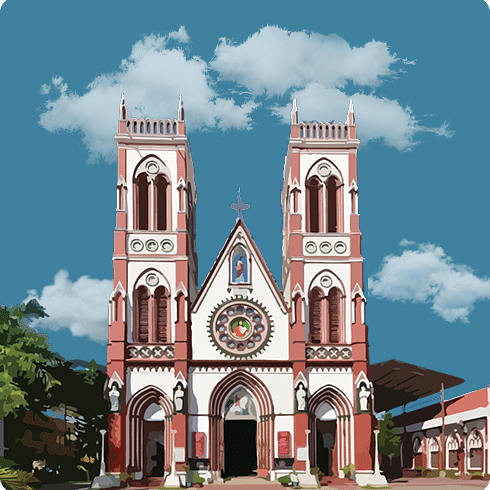
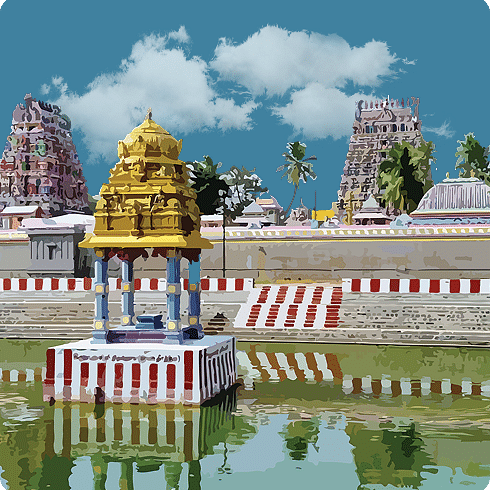
SRI KOKILAMBIGAI UDANURAI SRI THIRUKAMEESWARAR TEMPLE ✨
Over 1,000 years old, this Chola-era Shiva temple in Villianur is famed for its grand chariot festival, healing legends, and the rare Prasava Nandi—making it a sacred stop for both spiritual seekers and hopeful hearts.
Distance from Our Hotel11 km
Timing6:00 a.m. to 12:00 p.m.
4:00 p.m. to 9:00 p.m.FestivalChariot Festival: (May-Jun)
Sacred Food OfferedCurd, Buttermilk, Sundal, Pumpkins
Transportation CostFor assistance, please contact the front desk.
Disclaimer: The temple's timings are subject to change as per the operating committee's decisions.
About Sri Kokilambigai Udanurai Sri Thirukameswarar Temple:
- This temple is a revered Hindu temple dedicated to Lord Shiva, located in Villianur, a few km from Puducherry.
- It is also known as Kameshwarar Temple or simply the Villianur Temple.
- Within the temple, Lord Shiva is worshipped in the form of a Shivalinga and is known here as Thirukameshwara.
- The temple also houses shrines dedicated to Goddess Parvati, worshipped as Gokilambal Amman, and to Lord Murugan, among other deities.
- It is especially renowned for its grand annual chariot festival, which usually takes place during May or June.
- During this festival, the idols of Thirukameshwara and Gokilambal Amman are placed on a beautifully decorated chariot and taken on a procession through the town.
- The temple is said to be over 1000 years old, with its original shrine believed to have been built in the 12th century by a Chola king.
- The temple complex features concentric granite walls and a mandapam with intricately carved pillars depicting mythological scenes.
- Additional structures, including other shrines and the temple's beautiful masonry, were added during the Vijayanagar period in the 16th century.
- The 10-day chariot festival sees participation from people of all faiths, with the belief that pulling the chariot fulfils wishes.
- Offerings during the festival include pumpkins, coconuts, curd, and buttermilk, made as a mark of devotion and gratitude.
Divine Facts:
Once upon a divine timeline, a Chola king was down with a stubborn case of leprosy. Royal remedies were tried, palace doctors panicked, and herbs were boiled like there was no tomorrow—but nothing worked. Clearly, it was time to stop Googling symptoms and start praying. With faith as his medicine, the king turned to Lord Shiva. No fancy rituals, just deep devotion. And as legends would have it, the results were miraculous. The illness? Gone without a trace—like, even it didn’t want to mess with Shiva’s blessings. Overwhelmed with gratitude (and finally able to enjoy his royal spa days again), the king built a temple in Lord Shiva’s honour, right in the heart of a Vilwa tree forest. That sacred patch of land soon became Vilwanallur, a town named after the very leaves that witnessed a miracle.

